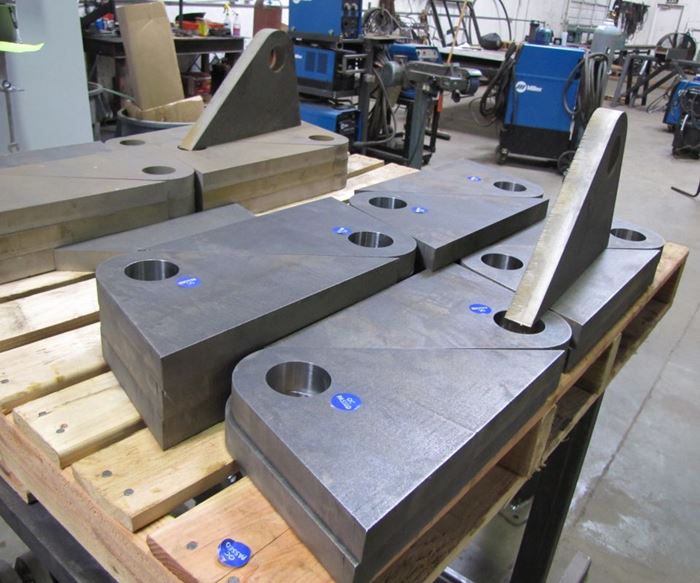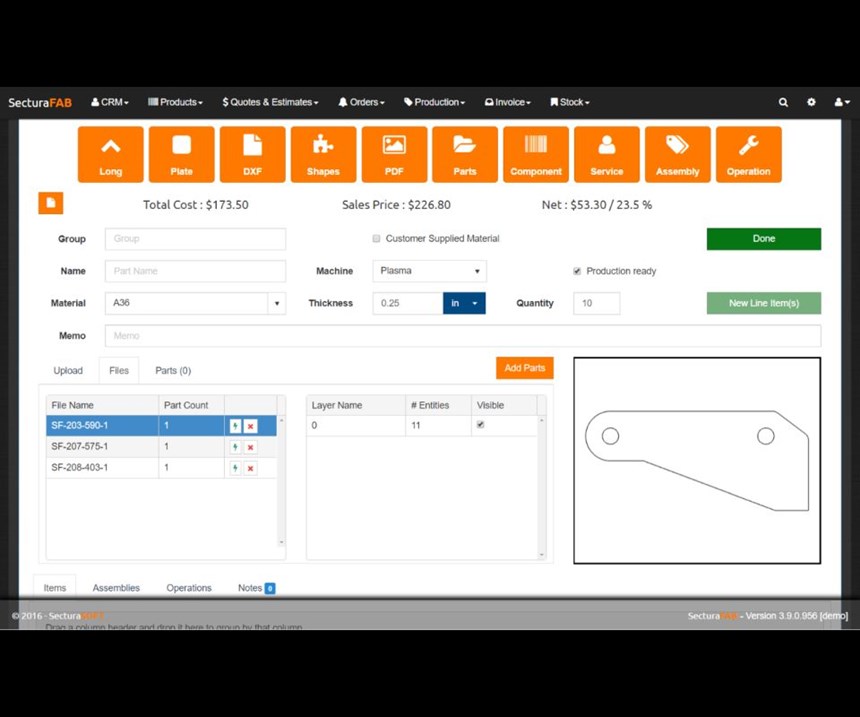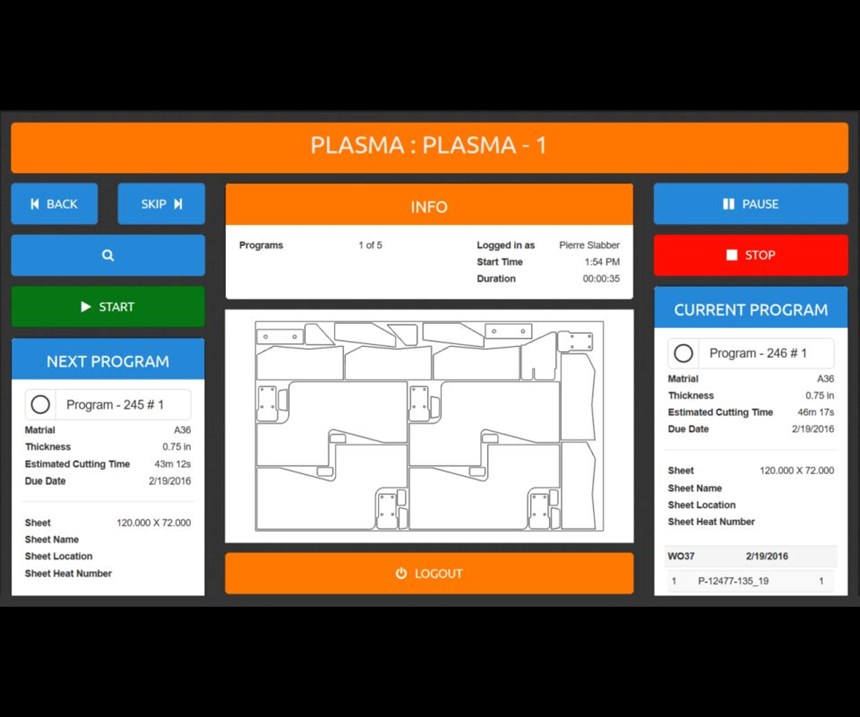Share




Traditional quoting processes are typically based on experience and estimates. The danger with this approach is that an inaccurate quote may have negative consequences: A quote on the high side will not be competitive and the job will be lost, or a quote on the low side will win the job but the shop will lose money fulfilling it (and a quote on the slow side won’t be considered at all). Pierre Slabber, president and owner of SecturaSoft, a software firm dedicated to solutions for manufacturers, fabricators, machining job shops and steel service centers, says this traditional quoting process must be replaced by an automated system that does not rely on guesswork.
His company's main software offering, SecturaFab, is designed to eliminate guesswork and accelerate the quoting process by leveraging the capabilities of computers, databases and intelligent algorithms with the intelligence of today’s CAD models and data linkages. The software also provides a standardized, company-wide quoting format. He says this approach makes it easier and faster to generate accurate, competitive quotations and production instructions. Although SecturaFab is designed primarily for fabricators who cut, weld and form metal products from plate or sheet, the underlying concepts and methods are being adopted for machining job shops as well. According to Mr. Slabber, a number of machine shops are already using early versions of the software as an advanced quoting system. The rollout of the machine-shop version of this quoting system is expected in the second quarter of this year.
The current quoting system is based on these concepts as outlined by Mr. Slabber: It is web-based, so quotes can be prepared on virtually any internet-enabled devices, such as PCs, laptops, tablets or cellphones. Being web-based also enables the system to be powered by cloud-based processing using algorithms for complex but rapid calculations, and databases that are extensive and comprehensive. A software-as-a-service pricing model also makes this cloud-based approach less costly to the end user.
Standardized, common templates and user-populated data fields provide customized calculations based on the user's rates for services, material costs, machine run time, secondary operations needed and associated costs, plus other variables. Calculations performed in the cloud can be launched behind the scenes once user data is entered so the results are ready when the application is used to prepare a quote later.
Perhaps most important, the algorithms applied in the quoting process are designed to be "intelligent," that is, they are based on part geometry automatically extracted from a CAD file of the part. In SecturaFab, multiple nesting algorithms are built into the quoting platform, Mr. Slabber explains. The algorithms are also intelligent in their ability to apply machine technology tables – information about the performance and capability of the laser, plasma cutter, waterjet, flame cutter or other profile-cutting equipment. In addition, SecturaFab is an open system that enables these tables to be changed by users to suit their environment.
Part geometry is best derived from native CAD files or files in a neutral geometry format. However, Mr. Slabber says the system can draw from a library of generic "smart shapes" that represent detailed but generalized workpieces the user encounters most often. These smart shapes are created by entering dimensions in data fields, which use SecturaFab’s CAD system in the background to draw the DFX/DWG file. Once these dimensioned drawings are created, the user can nest them or obtain run times without opening CAD sotware.
The software is also designed for integration, so it can not only draw info from CAD files, but it can also check the shop's inventory database to determine if enough stock is available to complete the job. If additional material must be ordered, up-to-date material costs can be applied to the quote at that point. According to Mr. Slabber, quotes that are accepted by the customer will have already been analyzed for production and can be sent directly to an enterprise resource planning (ERP)/nesting system, along with workorders and route cards. As a benefit, the process of turning a quote into an order does not require re-entering data, a step that might delay production.
Mr. Slabber explains that this level of integration should not be surprising to most users. He says it is not unlike comparing the experience of travel planning not long ago with today's online technology: "Formerly, when planning a vacation, we might break out a map and plot a route to our destination. We would identify potential side trips, investigate places to stop along the way, perhaps add up all the miles to determine how much it was going to cost with current gas prices. All of the information for this was available; we just had to put in some time and effort to collect and calculate it. Today, the same task is performed with a push of a button."
Now, he says, Google instantly maps the journey and enables the trip planner to evaluate alternative routes. "We know travel time, and can see where detours, traffic delays or construction will be encountered. We can identify stations with the best gas prices. It may show points of interest and instantly connect us to those attractions. Theoretically, we can even upload the map and route to our car's GPS." He says his quoting system seeks to emulate an ease of use and completeness that is similar to the experience travelers have come to expect from this technology.
Finally, Mr. Slabber points out that the quoting process has to be accompanied by a firm focus on profitability. Winning or losing quoted jobs is not the real issue; filling the shop with consistently profitable jobs is what counts, he says. In fact, timely, accurate quoting can uncover "opportunity capacity" for which a shop can identify additional jobs that utilize machine capacity and available stock at a highly competitive rate without disrupting the shop's overall profitability at the end of the month.
He sums up this outlook: "Using known pricing, run time and other production variables applied to geometry-based intelligence, a shop can use web-based quoting to dictate profitability — not hope for it."
Related Content
5 Tips for Running a Profitable Aerospace Shop
Aerospace machining is a demanding and competitive sector of manufacturing, but this shop demonstrates five ways to find aerospace success.
Read MoreContinuous Improvement and New Functionality Are the Name of the Game
Mastercam 2025 incorporates big advancements and small — all based on customer feedback and the company’s commitment to keeping its signature product best in class.
Read MoreGenerating a Digital Twin in the CNC
New control technology captures critical data about a machining process and uses it to create a 3D graphical representation of the finished workpiece. This new type of digital twin helps relate machining results to machine performance, leading to better decisions on the shop floor.
Read MoreHow to Mitigate Chatter to Boost Machining Rates
There are usually better solutions to chatter than just reducing the feed rate. Through vibration analysis, the chatter problem can be solved, enabling much higher metal removal rates, better quality and longer tool life.
Read MoreRead Next
5 Rules of Thumb for Buying CNC Machine Tools
Use these tips to carefully plan your machine tool purchases and to avoid regretting your decision later.
Read MoreSetting Up the Building Blocks for a Digital Factory
Woodward Inc. spent over a year developing an API to connect machines to its digital factory. Caron Engineering’s MiConnect has cut most of this process while also granting the shop greater access to machine information.
Read MoreRegistration Now Open for the Precision Machining Technology Show (PMTS) 2025
The precision machining industry’s premier event returns to Cleveland, OH, April 1-3.
Read More



























.jpg;maxWidth=300;quality=90)







